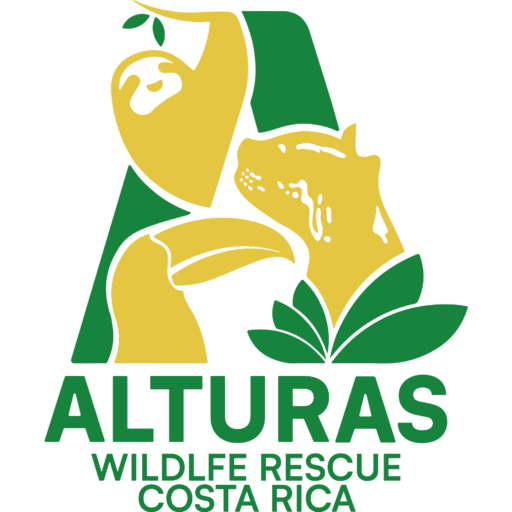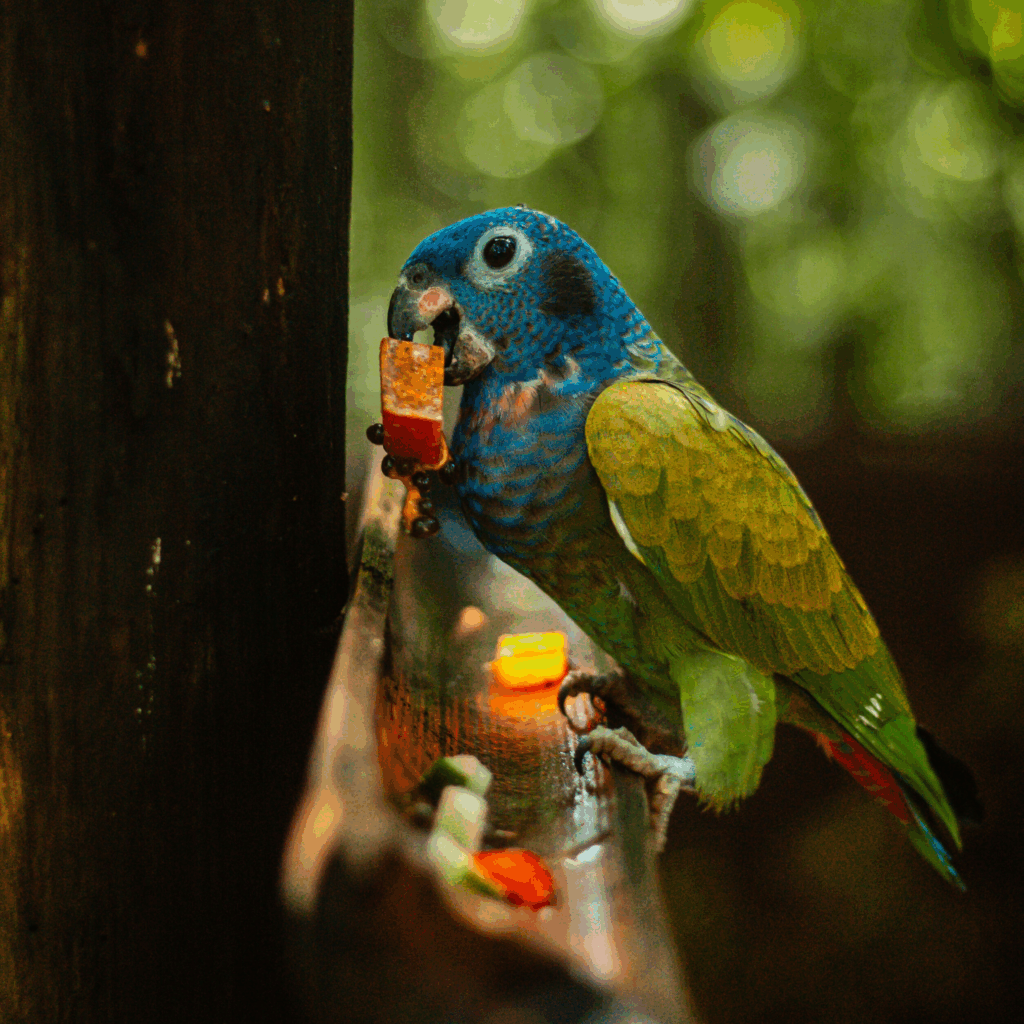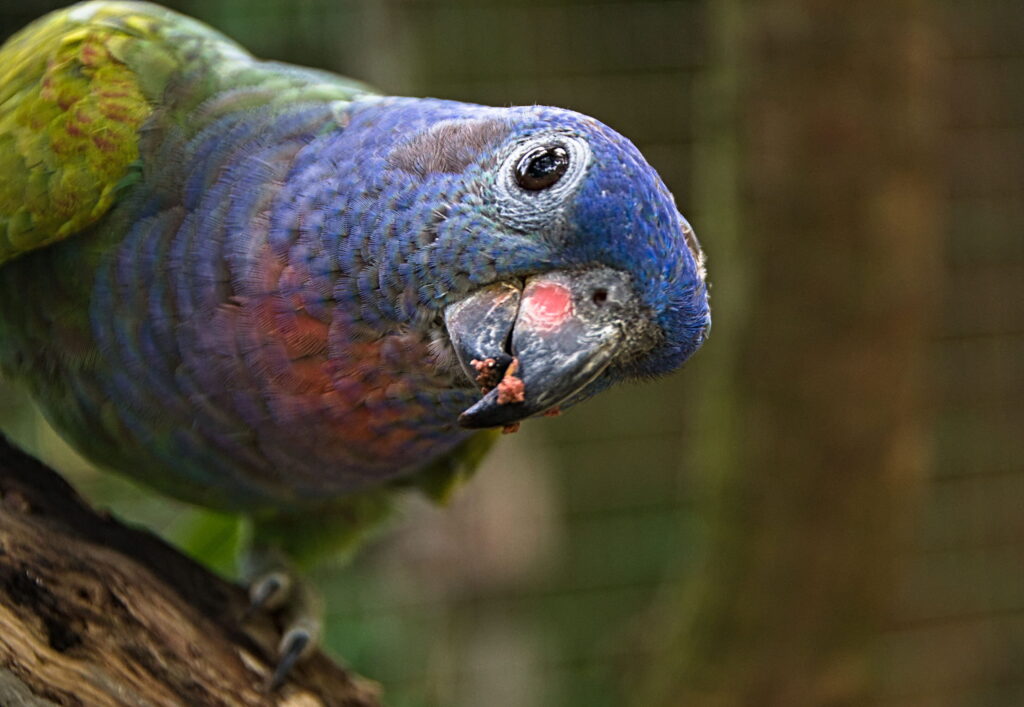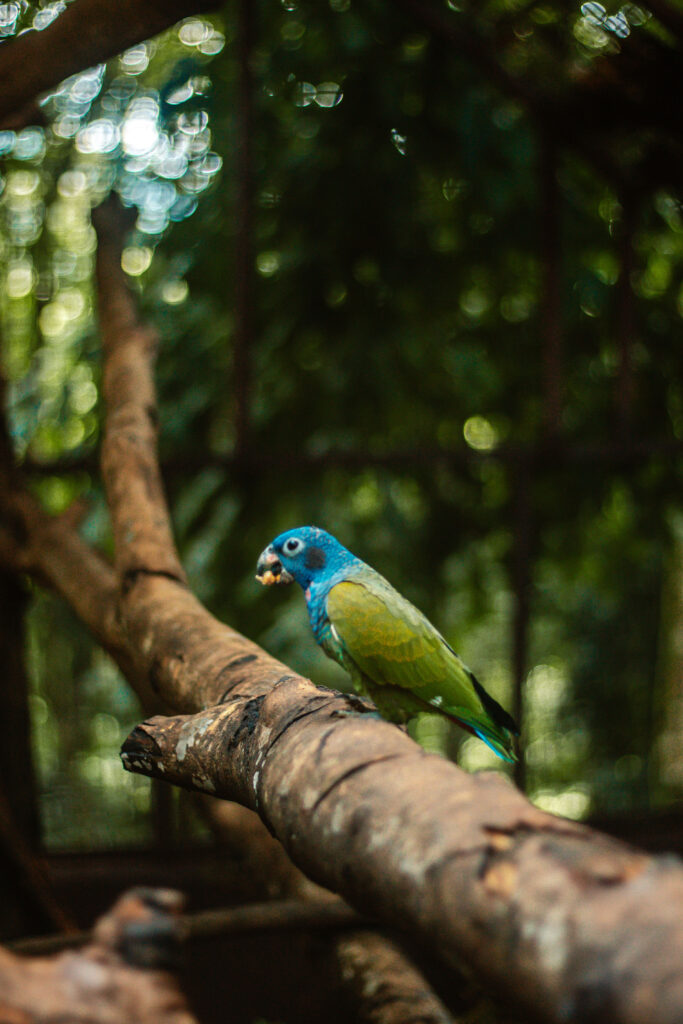Blue-headed Parrot
Species:
Taxonomy: (Pionus menstruus)
Spanish Name: Loro cabeciazul
Story: We are all victims of the illegal pet trade. Our background means that we cannot properly communicate with our wild counterparts, we cannot find food on our own and we are too used to humans to remain safe in the wild. So we live here in Alturas, where we are cared for the best we can be in captivity.



